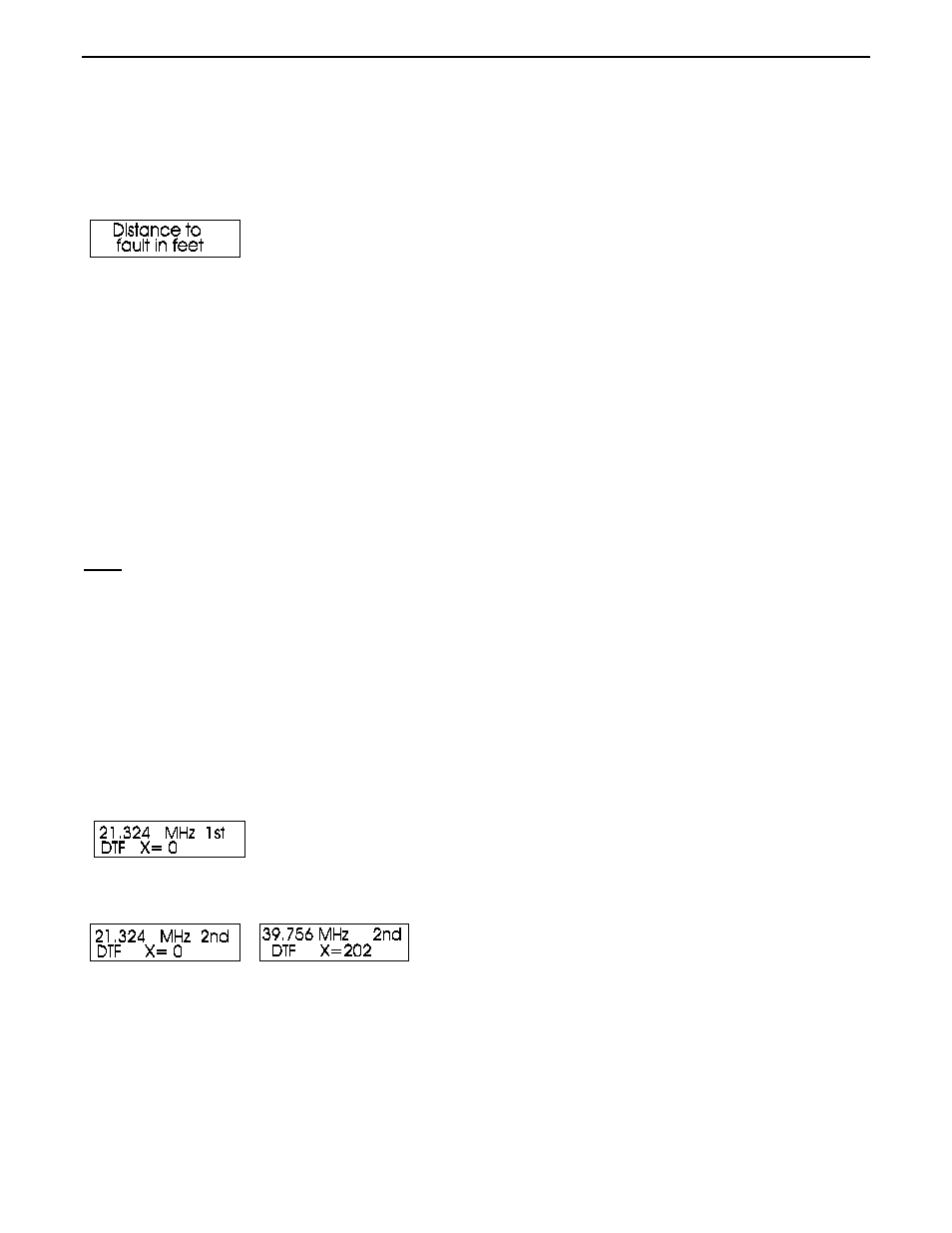Vectronics SWR-584B User Manual
Page 21

SWR-584B Instruction Manual
HF/VHF SWR Analyzer
21
The SWR-584B accurately determines velocity factor of any transmission line. Select the Distance to Fault mode,
the third measurement mode in the Advanced mode menu. This mode is reached by pressing and releasing the
MODE button two times after entering the Advanced mode menu. It can also be reached (and all other advanced
modes) by stepping through Advanced modes with the MODE button until the display indicates “Distance to
Fault in feet”.
If a balanced line is used, operate the SWR-584B only from internal batteries. Keep the SWR-584B a few feet
away from other conductors or earth, and do not attach any wires (other than the stub) to the unit. Use the
ANTENNA connector’s shield for one lead and its center pin for the other. Two wire balanced lines must be
suspended in a straight line a few feet away from metallic objects or ground.
Coaxial lines can lay in a pile or coil on the floor. Internal or external power can be used, and the SWR-584B
can be placed on or near large metallic objects with no ill effects. Coaxial lines connect normally, with the shield
grounded.
The Distance to Fault mode measures the electrical length of a transmission line. To obtain velocity factor, you
must know the physical length of the line. If the distance displayed is 75 feet, and the transmission line is
actually 49.5 feet long, the velocity factor is 49.5 divided by 75, for as result of 0.66 vF.
Note: The far end of the line can be either open circuited or short circuited. The line can not be
terminated in any impedance other than an open or short.
To confirm reliability, make two or more groups of measurements on different starting frequencies at least one
octave apart. If measured distances agree, they are almost certainly very reliable. The more base frequencies
used to confirm results, the more assurance you will have results are correct.
To measure velocity factor:
1.) Select a frequency where the Impedance meter is at the lowest deflection possible and where minimum
reactance displayed on the SWR-584B LCD, or where reactance crosses zero. The reactance zero-crossing
(or minimum reactance reading) is the point where reactance rises when the SWR-584B is adjusted either
higher or lower in frequency.
2.) Press the “GATE” button. The blinking “1st” will change to a blinking “2nd”.
3.) Tune the analyzer higher or lower in frequency until the Impedance meter reads the very next impedance
minimum, and where reactance displayed on the LCD again crosses zero. A non-zero minimum of a few
ohms is acceptable.
